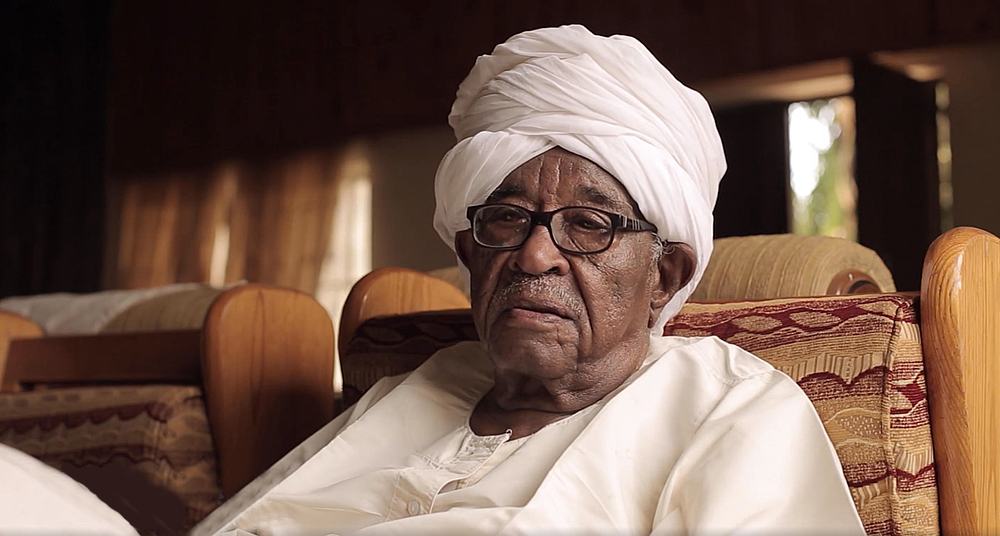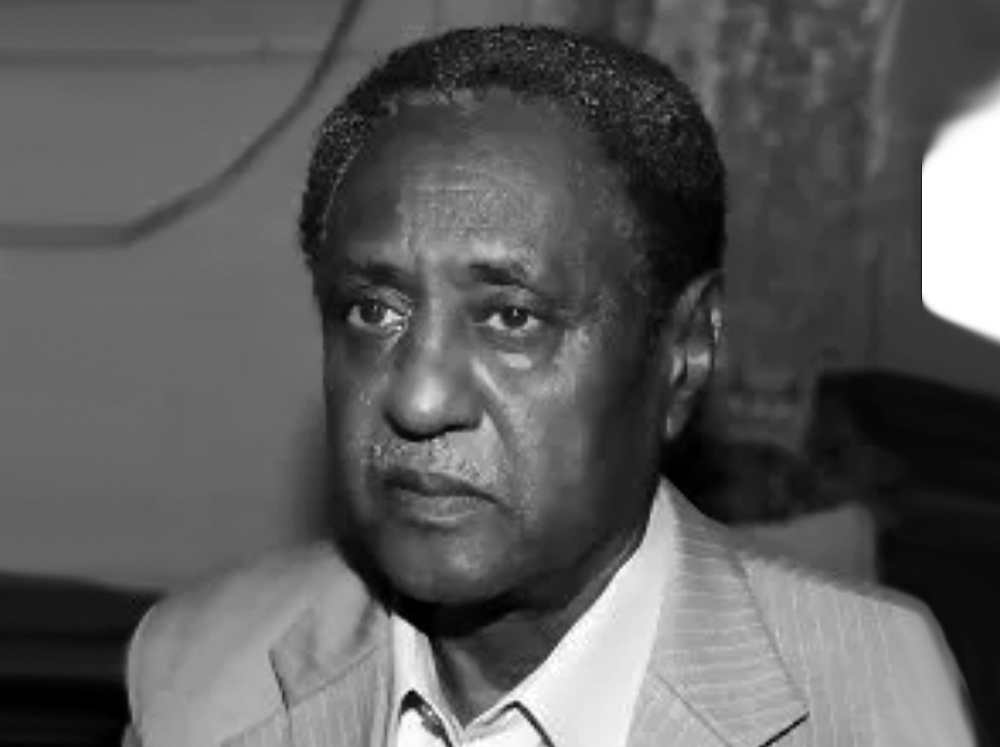
Departure of the Last Pyramids of Journalism 1 - 3: Mahjoub Mohamed Saleh, Visual Memory Even in Old Age
Sidiq Mihesi
Mahjoub Mohamed Saleh was born on April 12, 1928, in Hila Hamad, Khartoum Bahri, to a family involved in river transport. The railway line built by the English ended at this city, but the Blue Nile Bridge was not constructed and opened until 1910, making Khartoum Bahri a transportation center. The British administrations transfer of the river transport service to it led to the establishment of Bahri as an extension of two historic neighborhoods, Hila Hamad, named after the jurist Hamad Wad Mariam, and Koba Khogali, named after the other jurist Khogali Abu Al-Jaz. The residents of both neighborhoods worked in agriculture, the prevailing profession at that time.
Mahjoub completed his elementary education at Khartoum Bahri School in 1942. After that, he moved to Gordon College, which was of a secondary level, where the British sought to prepare distinguished students for use in administrative, written, and accounting positions. Mahjoub joined the Sudanese Movement for National Liberation (known as Hasduto) at the end of 1946, using it as a platform for his political activities against the British administration. Hasduto later transformed into an anti-colonial front, and then into the Sudanese Communist Party. In 1947, he enrolled in the Faculty of Arts, and in 1948, he was elected deputy secretary of the University College Students Union committee. He became the secretary-general in 1949, leading a student strike. As a result, Mahjoub, along with his leftist colleagues Mustafa El-Sayed and Taher Abdul Basit, was expelled from the college.
Fate led Jamal Mohamed Ahmed to be appointed as the first dean of student affairs at Khartoum University College. He promised Mahjoub to bring him back to the college to continue his studies. However, Mahjoub declined the offer and informed Jamal that he was interested in working in journalism. Jamal then mentioned that if thats the case, Mohamed Ibrahim Khalil had left Sudan Star English newspaper, and Bashir Mohamed Saeed had been sent to the UK for a journalism course. There was an opportunity to work there, so he advised Mahjoub to go to Sudan Star newspaper, where he might find an opportunity. Indeed, Mahjoub was selected to work at the English newspaper, and at the same time, Ahmed Yousif Hashim chose him to work with him at the Arabic newspaper Al-Sudan Al-Jadid. In both newspapers, his journalistic prowess strengthened, gaining experience in both Arabic and English journalism. In English, he trained under the British editor-in-chief, Mr. Hislop, first, and then the managing editor, Jack Hopler, second. In Arabic, he was trained by the journalist Ahmed Yousif Hashim, who had worked as a journalist in Egypt and Sudan since the 1930s, armed with Egyptian journalistic experience. Initially, Mahjoubs desire was to work as a teacher, as education had a special appeal that attracted learners from that generation. He sought to work in private schools and was selected as a teacher at El-Fasher School, then El-Obeid. However, the British authorities sent him back twice from the train station, fearing that he might spread leftist opposition among students.
Mahjoub highlights that 1946 was an important year in the history of Sudanese political movement. In that year, three significant events took place. The first was the travel of the first Sudanese delegation to Cairo to present Sudans vision for the future and its liberation from colonization by holding Egyptian-English talks, where Sudans issue was on its agenda. The second was Egypt granting scholarships to Sudanese students, making enrolling Sudanese students in Egyptian universities a legitimate pursuit, after they had been clandestinely sneaking in. The third was the British administrations decision to convert Gordon College into a university, and the establishment of the first Marxist movement in Sudan. These three events gave a strong impetus to political work, accompanied by great vitality in journalistic life.
In the "Sudan Standard" newspaper, Mahjoub met the late Bashir Mohamed Saeed, who preceded him in the profession by four years. Despite the age difference, they collaborated and shared the journey of challenges for several years.
Bashir suggested to Mahjoub Osman and myself to launch a daily newspaper distinguished by professionalism and boldness, introducing a new type of journalism. The idea was excellent, but they lacked funds! "Al-Ayyam" was established in 1953, four years after my entry into journalism.
Mahjoub recounts the story of "Al-Ayyam," how the idea turned into a comprehensive project. After receiving approval, we decided to purchase a quantity of lead letters for manual typesetting and an old primitive printing press from Egypt at a low cost. We rented a space for it in the Abu Al-Ala old building near the Independent Press Building. Workers manually assembled the pages, placed them in an iron mold, and tied the mold with a sturdy thread for the next stage, which was the printing phase. We did not receive salaries from the newspaper initially because its income was not sufficient, relying on fees from our foreign journalistic correspondences. Bashir later became a correspondent for the Middle East News Agency, and I became a Reuters correspondent, while Mahjoub Osman became a correspondent for the Associated Press. Thats how "Al-Ayyam" began its long journey.
Mahjoub says that one day, Bashir was on a mission to buy printing paper from the Pressman Company in Khartoum. There, he met a representative of the British company that produced Linotype machines for automatic typesetting. He agreed with him to buy an automatic typesetting machine in installments, not knowing where to get the money. However, with tremendous effort, we managed to pay the installments. It became the first Linotype machine owned by a private newspaper, marking a qualitative leap in Sudanese journalism at that time. Bashir later brought a used printing press during a visit to Egypt. This was a tremendous leap in Sudanese newspaper printing at the time, improving the visual appearance of Al-Ayyam and increasing the printing speed, leading to an increase in distribution, surpassing "Al-Ray Al-Am," which dominated the scene.
In a bold move, we decided to deviate from other newspapers by publishing Al-Ayyam as a morning paper instead of an evening paper, as all newspapers were evening papers, and employees bought newspapers while going home. We reversed the situation so that employees bought newspapers while going to their workplaces. Thus, "Al-Ayyam" became the first Sudanese newspaper to be published in the morning.
Mahjoub states that journalism started from the bottom of the ladder, involving fieldwork as a necessity for any journalist at the time. After engaging in the political community and expanding the scope of my political and social sources, I went to Britain in 1952 on a grant from the British Council for a six-month journalism course, working at the "Daily Express" newspaper and some regional newspapers. This was the first step in gaining international experience.
Returning from Britain, I applied what I learned in the art of journalism, especially precision in news dissemination and its components, which were not known in Sudanese journalism. I abandoned stylistic language in news formulation, relying on directness to convey the meaning. I also learned how news could turn into investigative journalism, understanding the difference between personal interviews and investigative journalism.
Mahjoub denies that "Al-Ayyam" was managed in three different ways, with Bashir representing the right, Mahjoub Osman representing the left, and himself representing the center. He states that from the beginning of the partnership, it was agreed that the newspaper would be completely independent. Each partner expressed their opinion in their own column. They belonged to different intellectual schools, with Bashir leaning toward the Independence Front, against the unity of the Nile Valley, and close to the Umma Party. Mahjoub Osman was a unionist, secretary of the Unionists Party in Port Sudan, was sentenced and imprisoned for leading protests against the legislative assembly, and was dismissed from his job before joining the Sudanese Communist Party. As for Mahjoub himself, he was leftist, joining the Sudanese Movement for National Liberation, the first Marxist organization in Sudan. In this way, "Al-Ayyam" was run as an independent newspaper in its editorial policy, but not independent in the positions and opinions of its owners. Their definition of independence was not aligning the newspaper as an institution with any political party. The editors were free in their political choices, committed to the credibility and professionalism of the news, and not neutral toward national issues.


